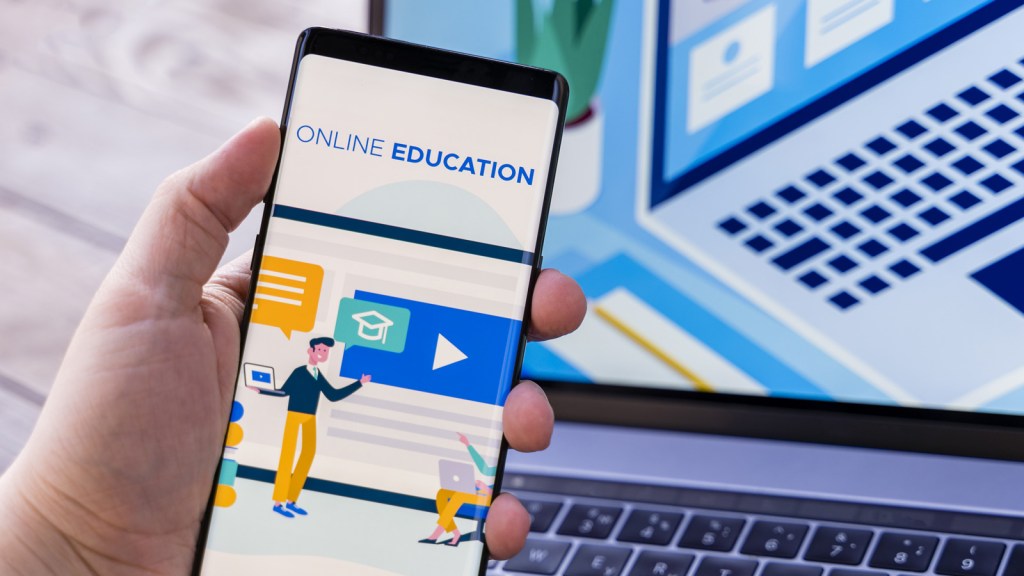In today’s evolving digital world, education has advanced with many tools and technologies. Blended learning has gained significant attraction due to its ability to offer a more flexible and engaging experience. It is a solution that combines online and in-person methods, enabling students to access a range of resources—such as multimedia content, digital assessments and interactive online platforms. It also fosters collaboration, allowing students to work with peers and instructors in dynamic, real-time learning environments.
Let’s explore some aspects of the tools emerging in the education system today and why one should prefer blended learning.
Why Blended Learning?
1. Transforming Education With Modern Learning Models
Blended learning combines both online and in-person learning experiences to provide learners with a rich, flexible educational environment. By blending virtual resources with face-to-face interactions, learners can engage with content in diverse ways that cater to their individual learning styles. Lessons, assignments, and resources can be saved and revisited, allowing students to access them as needed for review and further learning. The growing recognition of its ability to enhance engagement, flexibility and personalized learning is prompting more educators at both higher and lower educational institutions to adopt blended learning as an essential tool.
2. Makes Learning More Fun and Engaging
Blended learning has revolutionized education at all levels, making it more interactive and engaging. Gone are the days when students relied solely on textbooks or guides. This approach enables students to apply their knowledge, interact with instructors and collaborate with peers anytime and on any device. For example, D2L Brightspace has built learning easy for every stage of life—from the earliest days of school to higher education and beyond.
Blended Learning Tools
- Audiovisual Tools
Audiovisual tools are playing a crucial role in boosting student engagement and supporting diverse learning needs. According to a 2022 study from Educational Technology Research and Development, students retain up to 65% of the information delivered through AV tools, compared to just 10-20% from traditional lecture-based learning. As the audiovisual content enhances memory retention, deepens understanding and encourages active participation. These tools also foster an inclusive environment that accommodates students with special needs and different abilities by providing multiple forms of content delivery. Additionally, they help teachers present lessons in a more effective and accessible way, making learning easier for all students.
- Learning Management Systems (LMSs)
LMS platforms have become essential in education, serving as a centralized hub for course materials and facilitating both synchronous and asynchronous learning. They provide easy access to syllabi, lecture notes, reading materials, and other resources. By merging online content with traditional classroom instruction, LMSs support blended learning and cater to diverse learning styles and schedules. For example D2L Higher Education LMS for Colleges and Universities motivate students to succeed by taking advantage of Brightspace’s built-in opportunities to engage. Educators can use the tools that can help improve student outcomes and personalise learning to help students succeed, no matter what challenges they may face in their educational journey. This approach enables learners to engage with the material both collaboratively and independently, making LMS platforms highly effective for adapting to different learning preferences and improving knowledge retention.
Overcoming Learning Hurdles
Despite the significant advancements blended learning has brought to education, its implementation still faces challenges. Issues such as inadequate infrastructure, poor internet connectivity, and limited digital literacy among both educators and students brings a huge gap.* Ensuring a seamless flow between online and offline learning content can be challenging. Blended learning programs require systems that effectively track and measure progress across both digital and in-person formats. It can be difficult to track overall success when learning activities are spread across multiple platforms and environments such as D2L Lumi for educators which boost efficiency to keep the focus on delivering high-quality learning experiences.
The Future of Education
Blended learning has the potential to significantly enhance educational outcomes by engaging students on multiple levels. However, for it to be most effective, it requires careful planning, high-quality content and equitable access for all students. As technology continues to evolve, the demand for more flexible and dynamic learning experiences grows, providing both students and teachers with personalized methods to acquire knowledge and skills. A blended learning approach not only prepares students for academic success but also helps them develop essential skills such as critical thinking, problem-solving, collaboration, communication and adaptability—abilities that are crucial for success in the modern workforce.
*Source: A Study on Challenges and Solutions for Implementing Digital Literacy Programmes in India’s Rural Areas | July 2024
Disclaimer:
This article contains sponsored content that may not reflect the independent opinion or views of FinancialExpress.com. Further, FinancialExpress.com cannot be held responsible for the accuracy of any information presented here. Please consult a certified financial advisor before making any decisions based on this article.


